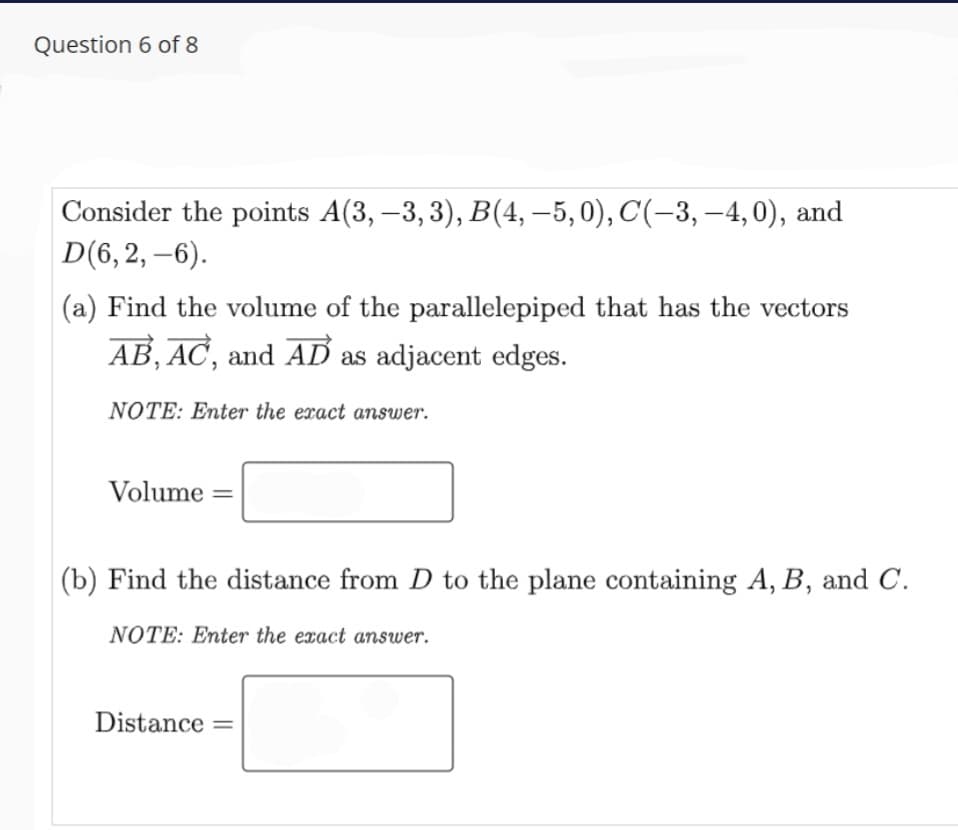Consider the points A(3, –3, 3), B(4, –5,0), C(-3,-4,0), and D(6, 2, –6). - (a) Find the volume of the parallelepiped that has the vectors AB, AC, and AD as adjacent edges. NOTE: Enter the exact answer. Volume = (b) Find the distance from D to the plane containing A, B, and C. NOTE: Enter the exact answer. Distance =
Consider the points A(3, –3, 3), B(4, –5,0), C(-3,-4,0), and D(6, 2, –6). - (a) Find the volume of the parallelepiped that has the vectors AB, AC, and AD as adjacent edges. NOTE: Enter the exact answer. Volume = (b) Find the distance from D to the plane containing A, B, and C. NOTE: Enter the exact answer. Distance =
Algebra & Trigonometry with Analytic Geometry
13th Edition
ISBN:9781133382119
Author:Swokowski
Publisher:Swokowski
Chapter11: Topics From Analytic Geometry
Section11.3: Hyperbolas
Problem 24E
Related questions
Question

Transcribed Image Text:Question 6 of 8
Consider the points A(3, –3, 3), B(4,–5,0), C(-3, –4,0), and
D(6, 2, -6).
(a) Find the volume of the parallelepiped that has the vectors
AB, AC, and AD as adjacent edges.
NOTE: Enter the exact answer.
Volume
|(b) Find the distance from D to the plane containing A, B, and C.
NOTE: Enter the exact answer.
Distance =
Expert Solution
This question has been solved!
Explore an expertly crafted, step-by-step solution for a thorough understanding of key concepts.
Step by step
Solved in 2 steps with 2 images

Recommended textbooks for you

Algebra & Trigonometry with Analytic Geometry
Algebra
ISBN:
9781133382119
Author:
Swokowski
Publisher:
Cengage

Algebra & Trigonometry with Analytic Geometry
Algebra
ISBN:
9781133382119
Author:
Swokowski
Publisher:
Cengage